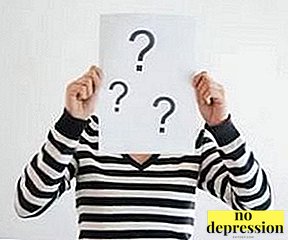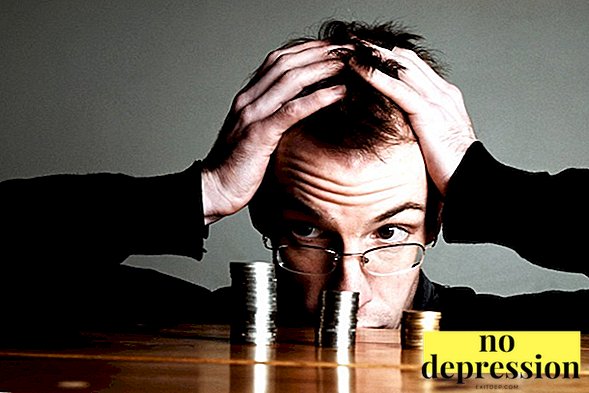To date, very few people know anything about psychiatry, and, moreover, this topic is considered taboo in society.
At the same time we are all surrounded people with mental disorders.
One part of them is unaware of this, and the second is treated, being on an outpatient basis with doctors who regularly write them powerful drugsthat help to live normally in society. One type of these drugs is antipsychotics.
What drugs belong to this class?

Neuroleptics - what is it?
First of all, to a similar class of drugs include products intended for the treatment of various psychosis and other severe mental disorders.
These include a number of phenothiazine, butyrophenone and diphenylbutylpiperidine derivatives.
Render very fast soothing effect, which complements the reduced response to external stimuli.
If a patient has panic or fear, then these symptoms are neutralized after taking the drug.
In the Russian psychiatric realities of neuroleptics appointed for almost all mental illnesseswhatever etymology they are. Nevertheless, hallucinations are the most important indicator, because, first of all, the patient must be reassured.
Mechanism of action
What are they for and how do they act? All antipsychotic drugs known to date have a similar mode of exposure, in which transmission of nerve impulses is reduced in those parts of the brain where dopamine acts as a link.
That is, the dopamine receptors themselves are blocked, and the psychosis retreats. There are 4 main ways of blocking dopamine receptors:
- Mesolimbic - ventral region of the midbrain, frontal cortex, hypothalamus, and substantia nigra. Through this path is the removal of active external symptoms.
- Mesocortical - ventral region of the midbrain, prefrontal cortex and frontal lobe of the cerebral cortex. Often the use of neuroleptics working on this department leads to cognitive impairment, and, in general, worsens the dynamics of treatment.
- Nigrostrient - the connection between the substantia nigra, ventral midbrain and striatum. By blocking dopamine in this chain, the patient often has disorders of the musculoskeletal system and other neurological complications.
- Tuberoinfundibular - contact of the hypothalamus, pituitary and limbic system. When dopamine blockade of the pituitary gland is the risk of increased levels of prolactin, which entails an increase in the mammary glands, spontaneous outflow of milk, menstruation, sexual dysfunction, and so on.

Modern drugs are aimed at hormone blockade not the whole dopamine series, but only on certain receptors.
This approach allows you to get rid of most of the side and more competently deal with the disease.
What is the antipsychotic effect?

The effect is the effect that the neuroleptic has on the brain and the general condition of the patient.
That is, this is the removal of all the actual psychotic symptoms that observed in a patient at the time of exacerbation.
In the event of psychosis or other mental disorders, such as schizophrenia, the antipsychotic can help relieve symptoms and improve the patient’s general condition.
This needs to be done not only for health, but also for the safety of the person himself, so that he cannot harm himself and the people around him, because often delirium and other acute conditions are accompanied by hallucinations.
Indications and contraindications
The main reasons for the appointment becomes acute conditions in which the patient may be. Usually this hallucinations or delusionswhatever they are called.
Anyway, here is a list of the main indications:
- autism;
- schizophrenia;
- neurological disorders;
- dissociative disorders;
- manic-depressive psychosis (bipolar disorder);
- depression;
- psychopathy;
- mania;
- alcoholic and narcotic delirium;
- anxiety;
- apathy;

You should be careful with contraindications, because there is great risk of much harm your health or a person close to you.
For example, almost all neuroleptics banned with glaucoma, because it is possible to simply lose sight.
Contraindications:
- angle-closure glaucoma;
- prostate adenoma;
- porphyria;
- parkinsonism;
- liver and kidney disease;
- damage to the heart and blood vessels;
- acute fever;
- poisoning with drugs-oppressors of the central nervous system;
- coma;
- pregnancy;
- lactation.
Classification
In the typology there are 2 large groups, which differ in the mechanism of action. In fact, these are old and new type medicines.
Typical neuroleptics:
- Phenothiazine derivatives in which aliphatic, piperazine and piperidine derivatives are released.
- Derivatives of butyrophenone.
- Indole derivatives.
- Thioxanthene derivatives.

Atypical Neuroleptics:
- clozapine;
- sulpiride;
- olanzapine;
- aripiprazole;
- risperidone.
In addition, “small” antipsychotics can be distinguished as a separate group, since they do not fit into any of the above groups.
Their key difference is that they are, in fact, correctors of behavior have sedative and anti-anxiety effects. They do not help to cope with hallucinations and delusions, but they fully complement therapy for anxiety disorders.
Neuroleptics are usually distributed in the form of tablets or vials for injection. At the moment, the only drug on the market is in the form of drops - Neuleptil.
Treats "typical" antipsychotics, and the convenient form of release will be ideally suited for patients with the broken swallowing reflex, and who badly transfer nyxes.
List of the most popular in alphabetical order
List of Neuroleptics Alphabetically:
- Aminazine;
- Amisulpiride (solian);
- Haloperidol;
- Ziprasidone (Zeldox);
- Klopiksol;
- Leponex;
- Mazheptil;
- Melleril;
- Moditen;
- Neuleptil;
- Olanzapine;
- Pipotiazin;
- Rispolept;
- Seroquel;
- Teasercin;
- Triftazin;
- Truxal;
- Eperapine;
- Fluanksol;
- Eglonil.

Speaking about the power of neuroleptics, in the fight for the title of the most potent, 2 drugs come across - it is Clozapine (an atypical group) and Tioproperazine (a typical group). If the first has the most powerful sedative effect, the second antipsychotic.
Speaking about the power of impact, doctors single out another classification - clinical:
- Strong action: Amisulpride, Fluanksol, Haloperidol, Seroquel, Ziprasidone.
- Medium action: Clozapine, Quetiapine, Sulpiride, Klopiksol.
- Weak action: Truksal, Tizertsin, Floropipamid, Promethazine.
- Prolonged action: Fluanksol Depot, Fluphenazine decanoate (Dapotum, Liogen Depot).
Names of the best drugs of the new generation without side effects

Despite the rapid development of modern medicine, farm industry is almost at a standstillSince the market for psychotropic drugs almost does not receive "breakthrough" drugs that would be completely different from the previous ones.
However, there are several drugs that have been able to deprive unwanted side effects who often accompany the reception of neuroleptics.
These drugs almost no side effects:
- Abilifay (aripiprazole);
- Fluphenazine;
- Quetiapine;
- Fluanksol;
- Levomepromazine;
- Zeldocks.
Vacation without a doctor's prescription
There are very few neuroleptic drugs that would be sold without a prescription.
At the moment, the release of such drugs is very tightly controlled by the state in the fight against drugs.
This is controlled by the 1998 List of Narcotic Drugs, Psychotropic Substances and their Precursors to be Controlled in the Russian Federation.
Purchase or storage of drugs without a valid prescription from this list is punished according to article 228 of the Criminal Code of the Russian Federation.

However, there are medicines that can be bought without a prescription.
it Eperapine, Paliperidone and Chlorprothixen.
Despite the free supply of these drugs in pharmacies, we would not recommend you to self-medicate, but to consult with a specialist.
Harm
The prescription of such drugs should be strictly controlled and ensured by professional doctors, since neuroleptics, like any drugs, can harm the body. Especially when it comes to the human brain.
Neuroleptics have many opponents. Indeed, if the drug is prescribed in the wrong dosage or for some reason does not suit the patient, the patient’s health condition clearly worsen.
The main harm that is done to the body comes from side effects, which, in fact, become independent diseases that were caused by taking antipsychotics. These are parkinsonism, depression, epilepsy, sterility, heart attack, jaundice and stroke.
In addition, the patient’s brain is experiencing very serious stress with "withdrawal syndrome"when, as directed by the attending physician, medication is stopped.

The effect of neuroleptics on the body is largely similar to narcotic, especially dependencies.
Failure from the drug, a person may experience emotional instability, depression, diarrhea, sleep disturbances and body pain.
Like any drug group, antipsychotics have both adversaries and defenders.
Anyway, without their use can not dobecause they have not demonstrated their effectiveness for the first decade. And thanks to the development of pharmacology, the side effects of drugs decrease or disappear completely.
And finally: never self-medicate, take care of your nerves and your loved ones!
Briefly about the side effects of neuroleptics:



